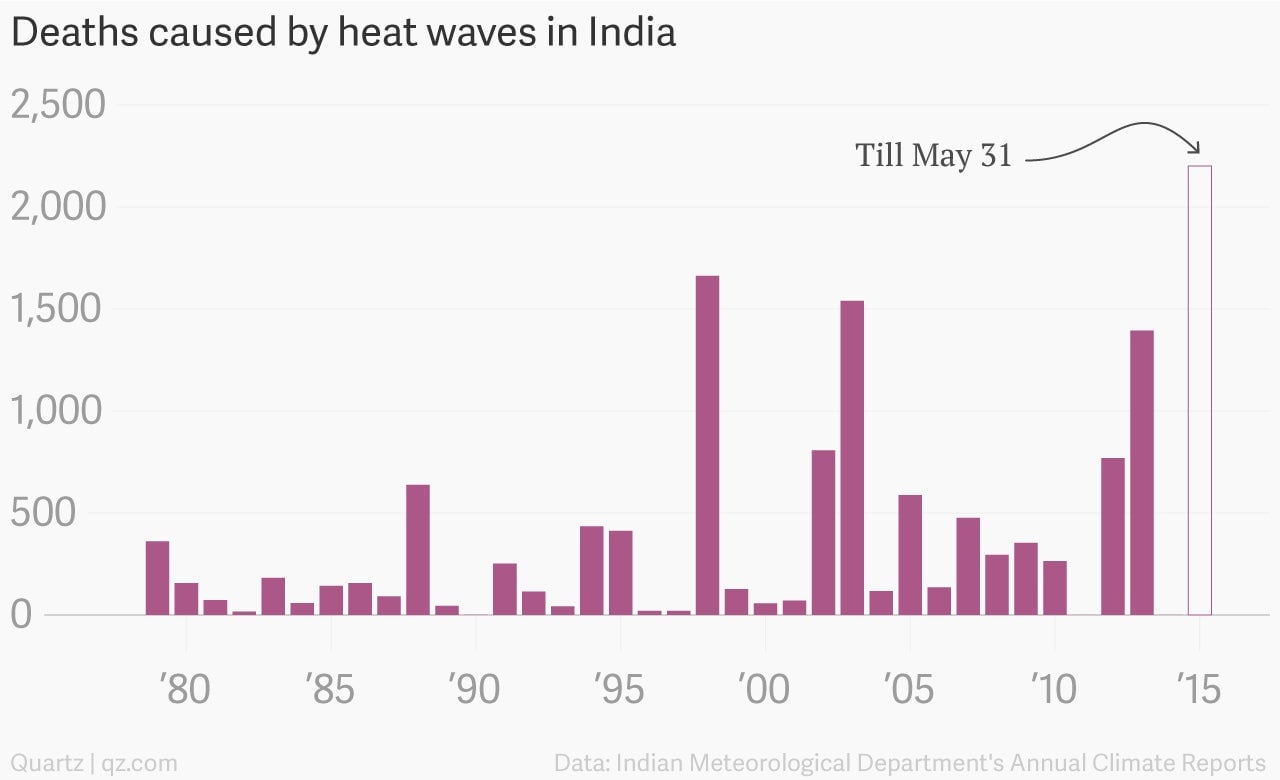Here’s what happens to your body in a heat wave
For all that the human body can achieve, it can’t handle temperature swings. A few degrees hotter (or colder) can cause severe disability, and even death. Sadly that fate has fallen upon at least 2,200 Indians this summer, making it the deadliest heat wave in the country.


For all that the human body can achieve, it can’t handle temperature swings. A few degrees hotter (or colder) can cause severe disability, and even death. Sadly that fate has fallen upon at least 2,200 Indians this summer, making it the deadliest heat wave in the country.

The body’s ability to maintain itself is called homeostasis (which comes from the Greek word for “standing still”). Many systems in the body are involved in this process, helping regulate everything from temperature to amount of calcium in the blood. If any of these systems aren’t able to function properly, it can cause severe damage to the body.
How the body reacts
Without appropriate precaution during a heat wave, here’s what happens to your body: First comes heat exhaustion, which involves profuse sweating, rapid breathing, and listlessness. Then the skin starts to feel dry, because it’s not able to perspire to keep temperatures low.
If still not treated by drinking water, going to a cool area or having a cold shower, nausea, vomiting, headaches and low blood pressure follow. In severe cases, there may be signs of confusion or intoxication.
If the ordeal continues, the reduced blood pressure will cause the vessels to contract, making the skin pale (or even blue). This may be followed by seizures and then organ failure. As the body shuts down, the person will fall unconscious and may die.
Those most vulnerable are children and the elderly, because their body regulation systems are the weakest. Equally, however, healthy individuals spending a lot of time outdoors, such as construction workers or farmers, are also at risk. And, indeed, these people have been the worst hit in India.
Could we survive a hot planet?
Global warming, caused by an unabated use of fossil fuels, is bound to increase average temperatures everywhere. In countries where such an increase is gradual, people may learn to adapt to it through behavioral change or engineering. Regulations such as taking time off on hot days may have to be introduced. Access to water and cooling areas will have to be increased.
But sudden changes in temperatures will remain deadly. The 2003 heat wave in Europe killed about 80,000 people. Even though temperatures seemed normal by tropical standards, Europeans and their infrastructure wasn’t built to cope with a 12-degrees-Celsius rise. Their houses are made to retain heat, and most deaths were a result of dehydration.
Such extreme weather events are becoming more frequent because of climate change. According to a recent study, India’s woes are going to get worse. After all, the agricultural sector still counts for the largest proportion of workers in any sector, with some 250 million workers.
Even now, the Indian government considers cold waves as natural calamities but not heat waves. Such titles are important because their pronouncements can set the country’s emergency machinery rolling.
After the 2003 heat wave in Europe, France adopted a warning system. In the 2006 heat wave, it is estimated that the system prevented as many as 4,400 deaths. Since then Australia and the UK have adopted such systems too. In India, only Ahmedabad has such a system. It would be worth acting on extending the system to other places while the issue is hot.